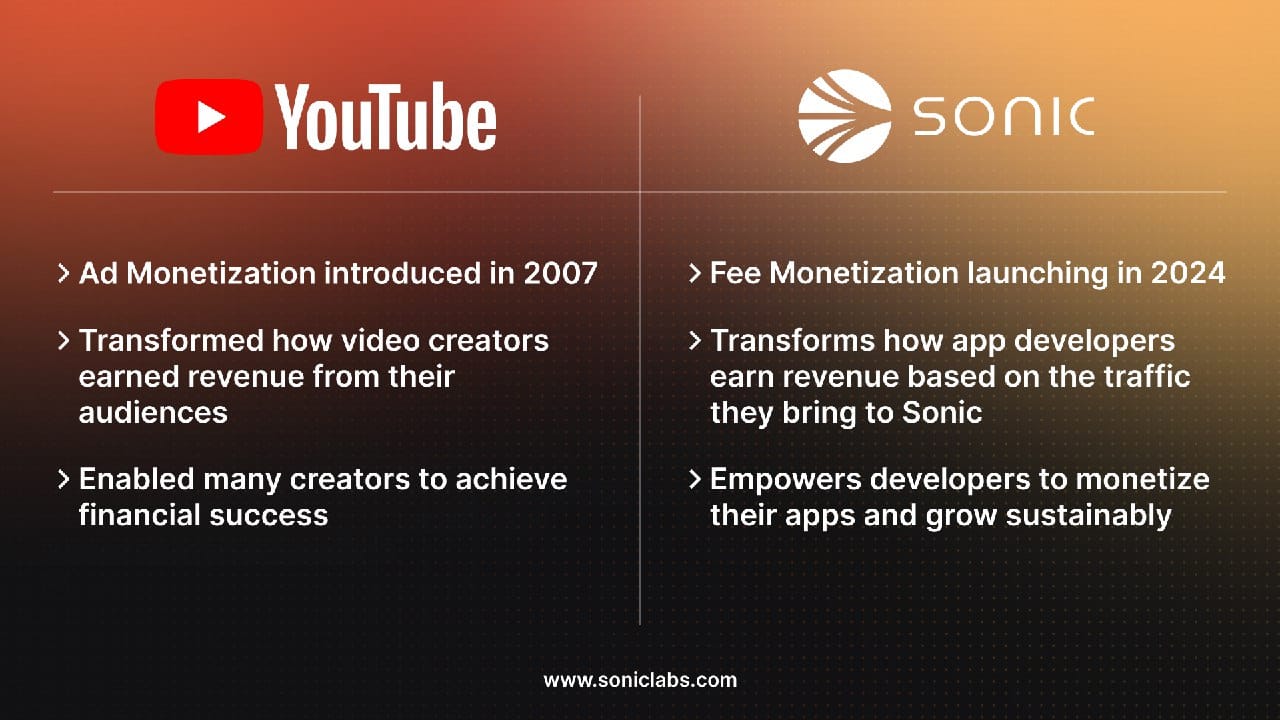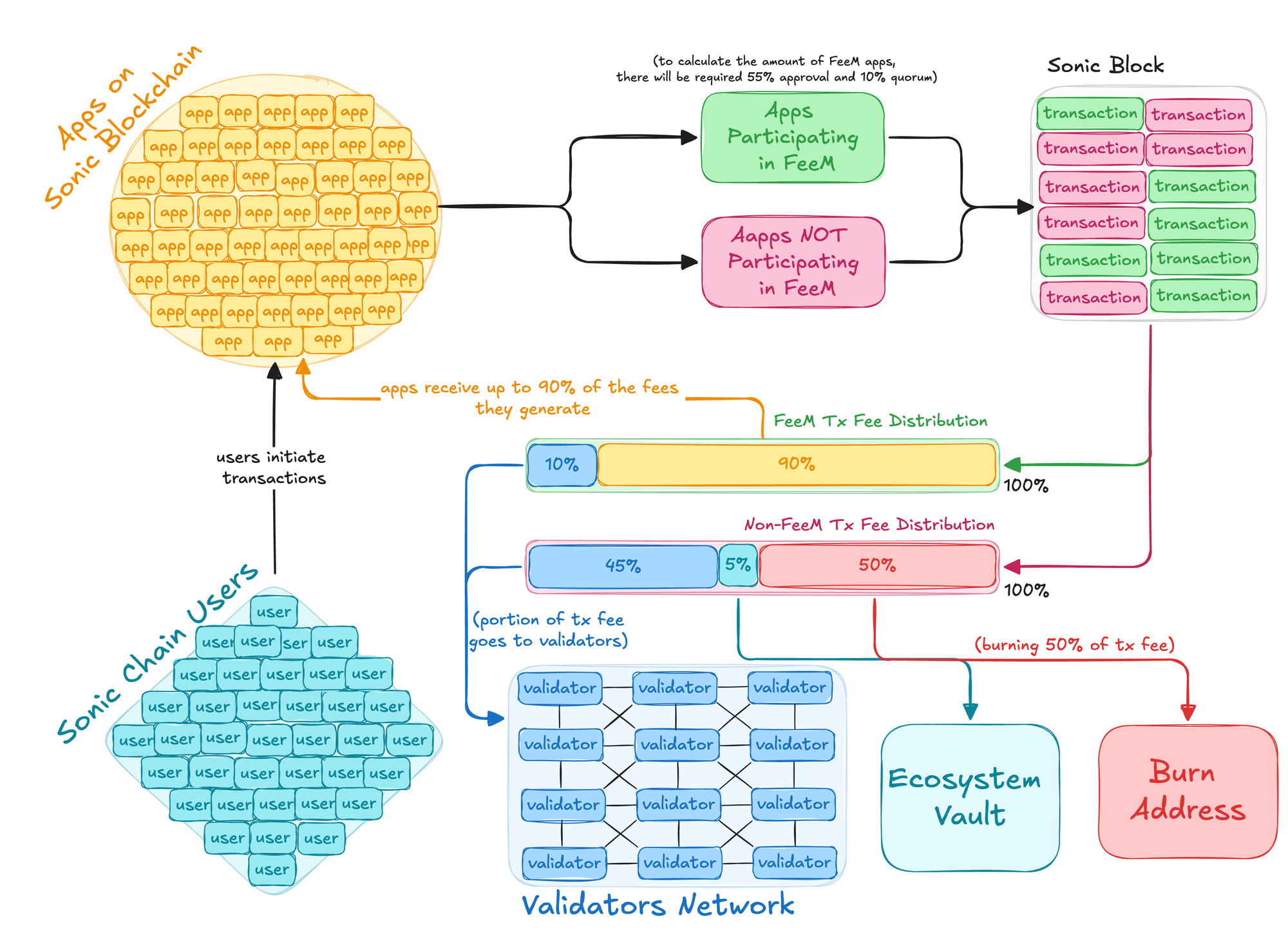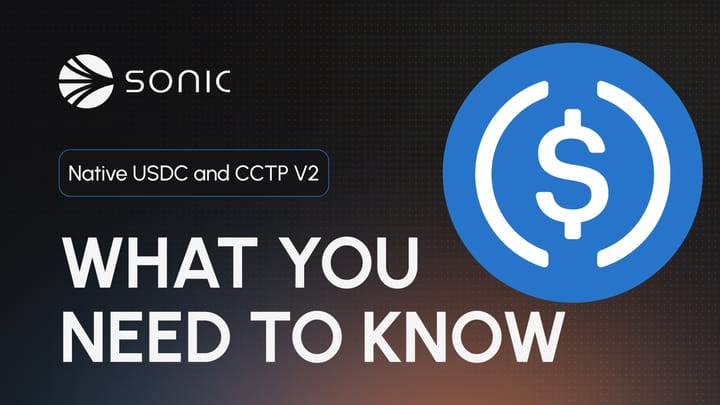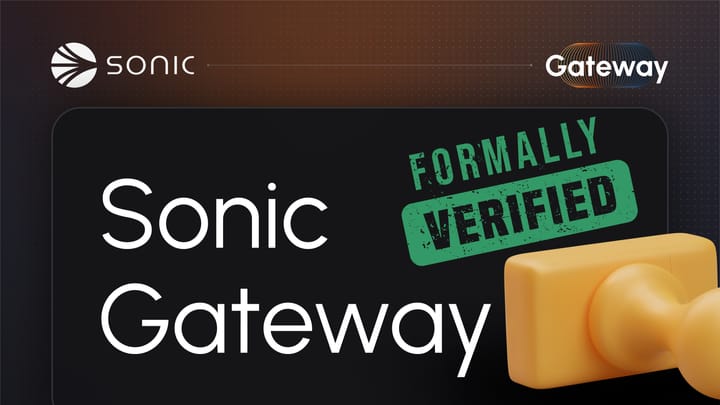Fee Monetization Reimagined on Sonic

In an industry overflowing with new chains launching like they’re endless episodes of a soap opera, we designed Sonic to stand out by focusing on fostering the development of impactful, consumer-facing applications.
At Sonic Labs, we believe the key to unlocking a proliferating platform is incentivizing developers to build high-quality applications that offer real benefits, encouraging users to engage with their apps as much as possible.
We achieve this through our unique fee-revenue sharing model, Fee Monetization, which directly rewards developers for the value their apps bring to the network.
What is Fee Monetization?
The Fee Monetization program (FeeM) on Sonic offers developers up to 90% of the fees their apps generate, providing them with a sustainable income.
The program mirrors the ad-revenue sharing model found on Web2 platforms like YouTube, which incentivizes creators to publish content and earn rewards based on the traffic they generate.
On Sonic, we implement this concept at a decentralized level to reward developers for the user traffic they bring to the network.

Transaction Breakdown
Sonic categorizes transactions into two types: those stemming from apps participating in the Fee Monetization program and those from other apps.
We’ve implemented a unique burn mechanism that burns a portion of the fee from transactions that don’t stem from apps participating in FeeM, gradually decreasing the supply of S over time.

For transactions on apps participating in FeeM, up to 90% of the transaction fee will be given to the app’s developer, and the remaining amount will be given to validators.
For any other transactions, 50% of the fee will be burned, and the remaining amount will be given to validators and the Ecosystem Vault.
The table below outlines the difference in transaction fee distribution between these two categories:

An Example of FeeM
To understand the impact of Fee Monetization (FeeM) on the distribution of funds to developers, validators, and the burn mechanism on Sonic, let's consider an example.
Imagine that over one year, 50% of all transactions on Sonic come from apps participating in FeeM, while the other 50% originate from apps that do not participate. While these numbers will fluctuate, we've assumed a 50/50 split due to the uncertainty of how many developers will adopt FeeM.
Let's also assume the average transaction fee is $0.01, and Sonic processes 10 million transactions per day — a fraction of its capacity to handle approximately 900 million transactions daily.
Based on these assumptions, the annual flow of money would be as follows (rounded to the nearest 100,000):
- $36.5 million in fees earned by the network
- $16.4 million paid to Sonic developers
- $10.0 million paid to Sonic validators
- $9.1 million burned
This projection demonstrates only a portion of the network’s capabilities and reflects our commitment to building a sustainable incentive model that motivates developers to create high-quality applications and encourage user engagement.
Real-World Example
An infrastructure provider reached out to us and requested a six-figure integration fee to launch on Sonic. We introduced them to Fee Monetization and how the program rewards developers for building products on the network and generating traffic.
After running the numbers, they realized the percentage they'd earn from FeeM over a year would surpass the integration fee they had requested. Their usual revenue model would only net them a low six-figure, one-time payment.
However, with FeeM, they're likely to earn seven figures, incentivized by their on-chain activity that directly benefits Sonic — paid organically by users, not through chain-supplemented payments.
Blockchains aren’t intended to rely on endless grants or indefinitely subsidize protocols and infrastructure providers with unsustainable revenue models. Their purpose is to facilitate transactions and empower developers with the necessary tools to build and scale their projects.
At Sonic, we’re facilitating the next generation of decentralized applications. If you’re interested in learning more as FeeM develops, follow us on X or email bd@soniclabs.com for any inquiries.



